OCD
OCD (Obsessive compulsive disorder) involves intrusive and distressing thoughts - obsessions, followed by specific self-soothing behaviours - compulsions. A natural, human response to discomfort is avoidance. In OCD, avoidance takes the form of compulsions.
It’s estimated that 4% of the population have OCD. In children, symptoms often develop between 10–14 years old, affecting boys earlier and with more severity.
Compulsions may be obvious - like repeated cleaning; subtle - seeking reassurance; or invisible - repeating a phrase in your head. The latter is sometimes known as ‘Pure O’.
Compulsions reinforce OCD. If a person washes their hands after touching a “contaminated” door knob, the relief sends a false message that the door knob was harmful, reinforcing the cycle.
OCD is recognised by the World Health Organization as being one of the top ten most disabling illnesses.
In OCD unwanted or unpleasant thoughts dominate normal thinking patterns. Obsessions may manifest as an urge, mental picture, feeling or memory.
Common intrusive thoughts are:
- fear of harming yourself or others
- fear of contamination
- need for things to be 'just right' - clean or orderly
- thoughts about sex
- fears about relationships, like infidelity
Compulsive behaviours include:
- cleaning and hand washing
- checking – if doors are locked or the gas is off
- counting, ordering and arranging
- hoarding
- asking for reassurance
- repeating words in your head
- thinking "neutralising" thoughts to counter obsessive thoughts
- avoiding places and situations that trigger obsessive thoughts
- using alcohol or drugs
There is no definitive cause for OCD, but there are three main theories.
Biological and genetic factors. A report indicated that nutritional deficiency and MTHFR mutations (which affect a third of the population, causing methylation issues and making it difficult to absorb B vitamins) can increase OCD. Methylation governs your ability to create neurotransmitters like serotonin and GABA, low levels of which are associated with OCD.
Childhood trauma, emotional abuse and neglect may increase risk of OCD. Trauma can lead us to develop strong thought patterns and behaviours. If parents or carers used compulsive behaviours to deal with anxiety, we may learn it as a normal coping strategy.
Beliefs or thoughts may get ‘locked in’. If we feel they are true, we live our lives accordingly. If the belief is frightening, it can trigger anxiety and start the OCD cycle.
Our clinical psychologists can diagnose OCD and offer support to those with the condition.
Diagnosis may seem scary, but it can allow space for self-compassion and help improve your quality of life.
Cognitive Behavioural therapy and Mindfulness Based therapy can help you become aware of unwanted thoughts and compulsive behaviours. They can also help you develop coping mechanisms in place of compulsions.
You may want to address unresolved trauma or difficult experiences that led to the development of OCD - psychotherapy can help.
Our naturopaths can recommend the right tests in order to assess contributing factors like methylation issues, deficiencies, and levels of neurotransmitters.
Exercise can change your brain patterns, triggering neurons to make new connections which can support those with OCD.
Eating foods rich in tryptophan can boost serotonin levels. Those who lack sleep are more likely to have repetitive negative thoughts - so getting a good night’s sleep is key.
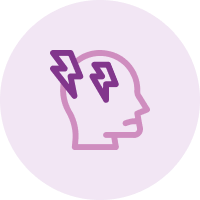
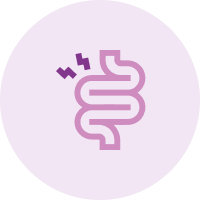


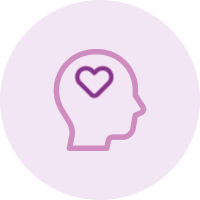

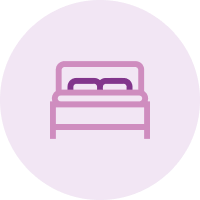
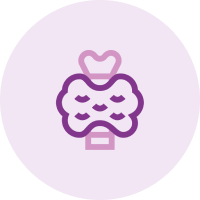
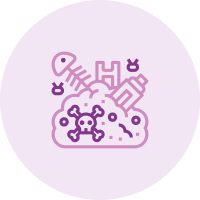



'%3e%3cg%20id='Group_40'%20data-name='Group%2040'%20clip-path='url(%23clip-path)'%3e%3cpath%20id='Path_45'%20data-name='Path%2045'%20d='M23.55,44H20.457c-.123-.028-.245-.066-.37-.083-.736-.1-1.481-.155-2.208-.3a21.577,21.577,0,0,1-13.2-8.085,21.482,21.482,0,0,1-4.459-16.6A20.745,20.745,0,0,1,5.335,7.652,21.54,21.54,0,0,1,25.058.2,20.789,20.789,0,0,1,36.271,5.248a21.634,21.634,0,0,1,7.392,12.913c.136.757.226,1.523.337,2.284v3.1c-.094.692-.167,1.387-.287,2.074A21.768,21.768,0,0,1,36.981,38.1a21.477,21.477,0,0,1-11.108,5.555c-.77.136-1.548.229-2.323.341M9.457,21.975c0,1.776-.039,3.553.011,5.327a7.607,7.607,0,0,0,1.453,4.542,7.129,7.129,0,0,0,5.74,2.691c1.931.078,3.865.113,5.8.084a54.556,54.556,0,0,0,6.3-.278,6.248,6.248,0,0,0,5.388-4.6,11.62,11.62,0,0,0,.441-3.692c-.018-3.407-.033-6.816-.133-10.221A6.349,6.349,0,0,0,33.06,12.1a7.045,7.045,0,0,0-5.8-2.651c-3.506-.057-7.014-.04-10.521,0a7.593,7.593,0,0,0-4.267,1.231,7.01,7.01,0,0,0-3,5.967c-.064,1.773-.013,3.551-.013,5.327'%20fill='%23fff'/%3e%3cpath%20id='Path_46'%20data-name='Path%2046'%20d='M21.981,11.566c1.971.066,3.932.089,5.887.21a4.372,4.372,0,0,1,4.338,4.356c.123,3.145.12,6.3.12,9.446a14.831,14.831,0,0,1-.267,3.11A4.215,4.215,0,0,1,27.911,32.2c-3.187.111-6.379.117-9.569.119a14.288,14.288,0,0,1-3.024-.261A4.206,4.206,0,0,1,11.8,27.916c-.112-3.175-.121-6.354-.121-9.532a14.84,14.84,0,0,1,.272-3.11,4.249,4.249,0,0,1,4.12-3.495c1.969-.119,3.945-.146,5.909-.213m6.487,10.447a6.466,6.466,0,1,0-6.475,6.448,6.429,6.429,0,0,0,6.475-6.448m.287-5.26a1.508,1.508,0,1,0-1.515-1.486,1.515,1.515,0,0,0,1.515,1.486'%20fill='%23fff'/%3e%3cpath%20id='Path_47'%20data-name='Path%2047'%20d='M21.983,26.2a4.211,4.211,0,1,1,4.229-4.169A4.193,4.193,0,0,1,21.983,26.2'%20fill='%23fff'/%3e%3c/g%3e%3c/g%3e%3crect%20id='Rectangle_1422'%20data-name='Rectangle%201422'%20width='46'%20height='46'%20fill='none'/%3e%3c/svg%3e)